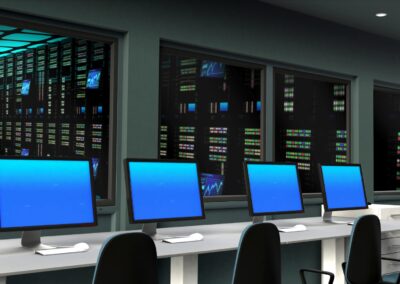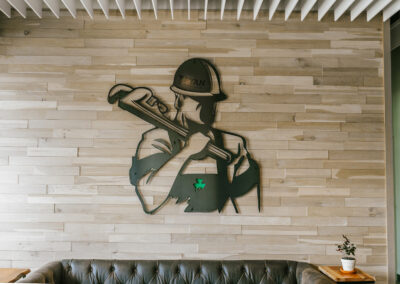Fire Suppression Systems Overview
What are fire suppression systems?
Fire suppression systems control fires by reducing oxygen, limiting fuel sources, and cooling the affected area. When installed and maintained correctly, these systems can stop or slow the spread of fires, providing time to evacuate the building before emergency responders arrive.
Where are they needed?
These systems are typically used in spaces where sprinklers may not be the best option, such as areas with electrical equipment, valuable materials, or items sensitive to water damage.
Selecting the right fire suppression system requires understanding how active and passive fire protection methods work together. This approach helps minimize structural damage and ensures the safety of people in the building.
Primary Types of Fire Suppression Systems:
- Clean Agent Systems: Clean agent suppression systems protect valuable assets in spaces like computer labs, electrical rooms, and areas with irreplaceable artifacts. These systems use chemical agents or inert gases to extinguish fires, preventing the water damage that sprinkler systems can cause. They quickly stop Class A, B, and C fires, offer non-conductive protection, and require minimal cleanup. FM-200, Novec 1230, and inert gas systems are commonly used to safeguard sensitive equipment and materials.
- Water Mist: Water mist suppression systems release fine mist that evaporates on contact with a fire. This process cuts off the fire’s oxygen supply without flooding the room.
- Foam Deluge Systems: Foam deluge systems are ideal for spaces with oil or flammable chemicals. These systems propel a concentrated foam mixture that expands and suffocates the fire.
- Chemical Foam: Chemical foam systems, like Ansul systems, excel in commercial kitchens. These systems release a water-based agent combined with chemical foam to quickly smother flames. Wet chemical foam systems, specifically designed for kitchens, target localized fires, offering a critical solution for high-risk areas. Kitchen fire suppression systems sit under cooker canopies and activate through a manual switch or heat-sensitive link. When exposed to high temperatures, the heat link breaks and triggers the immediate release of foam. This rapid response stops fires quickly, protecting both the kitchen and its workers.
-
Dry Chemical: Dry chemical suppression systems release pressurized dry chemicals directly onto the fire, often before it’s visible. These systems are designed to suppress fires quickly and effectively.
Common Industries That Use Fire Suppression Systems
Fire suppression solutions are essential in industries where safety and property protection are critical. Some sectors face heightened fire risks, making these systems a priority:
- Industrial and Manufacturing: These facilities handle flammable materials and large quantities of raw goods. A fire could disrupt production and supply chains, making a reliable fire suppression system crucial for business continuity.
- Warehousing and Storage: Storage facilities pack flammable goods into confined spaces while meeting safety regulations. These systems prevent fires from spreading and provide vital protection for large commercial spaces.
- Data Centers and Server Rooms: Fires are one of the leading causes of downtime in data centers, often resulting in extended outages that impact businesses. Given the heat-sensitive electronics and nonstop operations, they are essential for preventing fires and minimizing disruptions.
Ready to Protect Your Facility?
Properly selected and maintained fire suppression systems are essential for protecting your assets, ensuring safety, and minimizing damage. Whether you’re safeguarding valuable equipment or maintaining a safe environment in high-risk areas, choosing the right system can make all the difference.
Contact us to discuss the best suppression solution for your facility.

